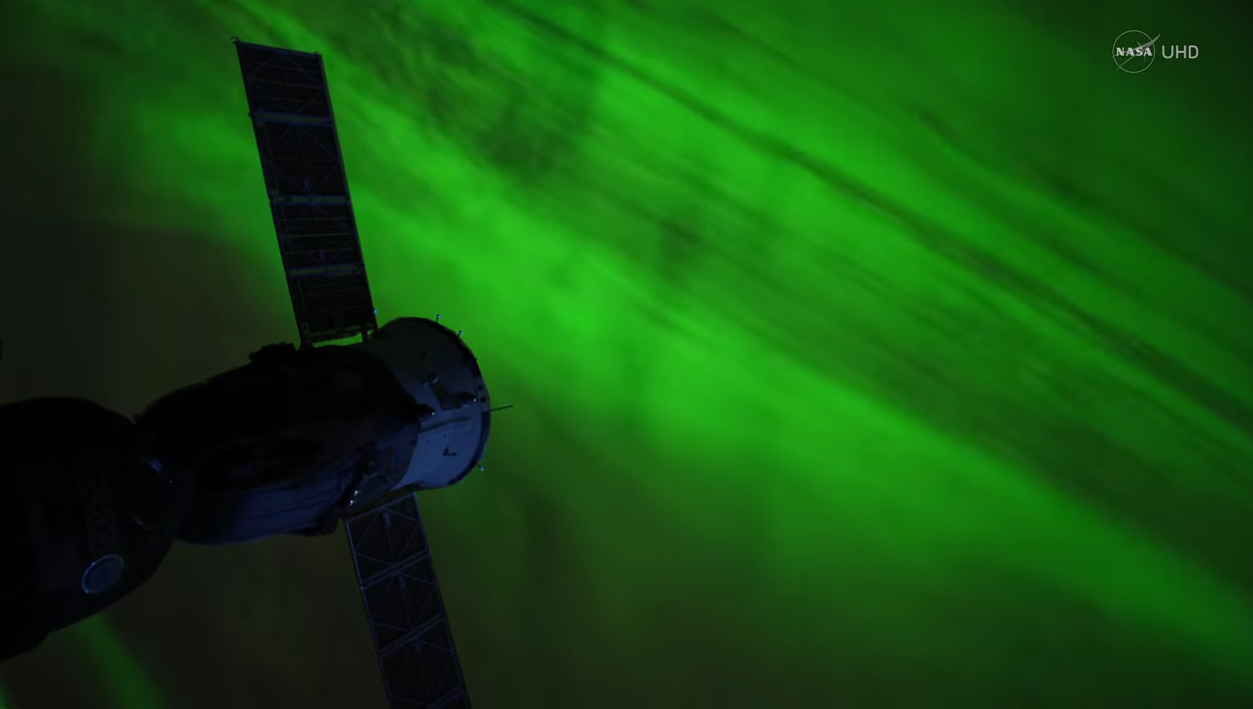Spectacular Auroras Captured in Dramatic New Time-Lapse Video

The shimmering atmospheric lighting displays known as auroras have never looked sharper than in a new ultra-high-definition video that was shot in space.
The stunning time-lapse footage was captured from the International Space Station in 4K ultra high definition (UHD), a video format with a resolution of 3,840 pixels horizontal by 2,160 pixels vertical. (For comparison, full-HD resolution is 1,920 pixels by 1,080 pixels.) The eye-catching video was uploaded by NASA TV to YouTube on April 17.
As the space station passes overhead, the auroras' colorful, translucent light displays — mostly shades of brilliant greens with some purple and yellow hues — hover above Earth. They are strikingly vivid, and the swirling shapes they produce are astonishingly distinct and detailed. [Watch the video of the amazing auroras from space]
Auroras are produced when solar particles that are ejected from the sun and carried to Earth by solar winds collide with electrically charged particles in Earth's magnetic field, triggering reactions in the upper atmosphere that release light.
They are most commonly glimpsed on Earth at high latitudes, in the Northern and Southern hemispheres. While auroras are typically green, they can also appear violet, red, blue, while or pink, according to NASA.
To produce the auroras video, NASA partnered with media infrastructure experts at Harmonic, with whom they also launched a new UHD channel featuring 4K content — the first noncommercial UHD channel in North America — the agency said in a statement.
And the auroras are just part of the dynamic activity captured in NASA's videos. The agency has also released 4K UHD footage of lightning flashes, the setting moon, expanses of clouds spread over the oceans, and the sprawl of city lights at night.
Get the Space.com Newsletter
Breaking space news, the latest updates on rocket launches, skywatching events and more!
This is one video you're going to want to watch as large as possible — trust us, it'll be worth it.
Follow Mindy Weisberger on Twitter and Google+. Follow us @livescience, Facebook & Google+. Original article on Live Science.
Join our Space Forums to keep talking space on the latest missions, night sky and more! And if you have a news tip, correction or comment, let us know at: community@space.com.











